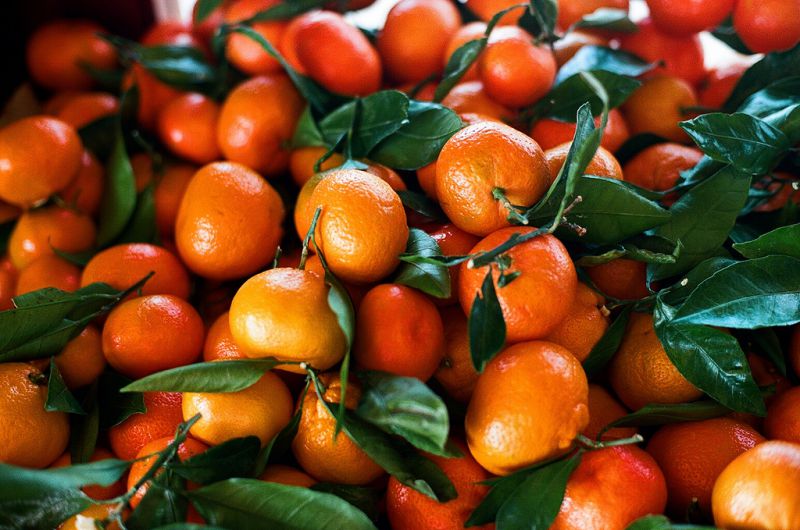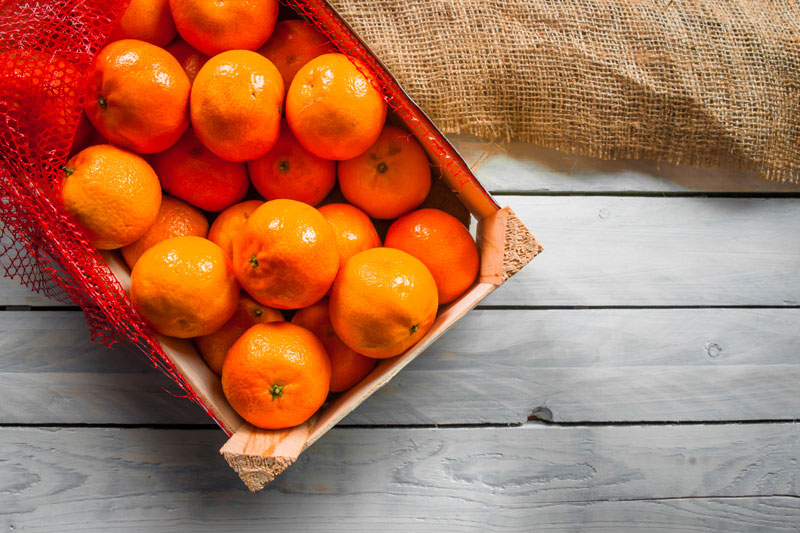Your Guide to Everyone’s Favorite Winter Citrus: Clementines
And what the hell are satsumas? And mandarins? And tangerines?
It happens every year: Just as it starts to get cold and gray, the first clementines appear in stores, like neon vitamin-C packets from some higher power that knows we need them. Sour at first, they get sweeter and sweeter throughout the winter, hitting peak flavor during the darkest, worst days of the year.
Clementines are one of the all-time great citrus fruits. But how much do we really know about them?
To understand the clementine, we have to first understand the very strange citrus family. Here in the US, our most common citrus fruits are the orange, the lemon, the lime, and the grapefruit. There are three, possibly four, citrus fruits seen as the ancestors of all the others, and of those four common American fruits, exactly none of them are ancestors.
The oldest citrus fruits we know about are the mandarin, the pomelo (sometimes spelled pummelo or some other variation), the citron, and maybe the papeda. The papeda is a Japanese fruit, bitter and sour, that’s the direct ancestor of fruits like the yuzu and the kaffir lime. The citron is a wrinkled, extremely bitter, basically juice-free fruit probably native to Southeast Asia but now most associated with the Middle East. The pomelo is still eaten; it resembles a giant, pale grapefruit, and tastes fairly similar to a grapefruit, but boasts a ridiculously thick peel.
The mandarin, though, as the sweetest of the original four, is by far the most common. Different varieties of the original four citrus fruits were bred and re-bred, and then descendants like the sweet orange, sour orange, lemon, lime, and grapefruit became even more important for breeding purposes. Figuring out these breeds is incredibly complex, not helped by the fact that multiple fruits often have the same name (like “sweet lemon,” which can refer to about five totally different fruits). There are even two competing taxonomy structures to try to figure out the genealogy of citrus. (One of them is called the “Swingle System,” which is a good name for a system.)
Many of our favorite citrus fruits, though, can be traced back to the mandarin: a squat, bright orange fruit, native to the tropics of East and Southeast Asia, with a thin skin and a juicy, sweet flesh.
The clementine is a grandchild of the mandarin. Here’s its parentage: one of its parents is a sweet orange (a very ancient cross between a mandarin and a pomelo) and its other is a fruit with many names, including the willowleaf mandarin (a cross between a mandarin and a pomelo, mostly mandarin, that appeared in the Mediterranean in the first decades of the 1800s). The clementine was first named in 1902 in Algeria; there are competing theories about where it comes from, but it’s likely that the competing theories are referring to similar but not identical mandarin offspring.
The clementine quickly caught on; as a seedless, incredibly sweet, loose-skinned citrus, it was extremely marketable, and became commercially grown in California by 1914.

You might be wondering, okay, but what exactly is a satsuma, then? The satsuma is the other major mandarin offspring; it’s grown more often in Florida, where it was introduced in the 1870s, rather than in California, which is where the clementine is prominent. In general, the clementine is more popular in the US, while the satsuma is more popular elsewhere in the world, especially in the UK, where it’s a common Christmas gift. The satsuma is a bit harder to peel than the clementine and not quite as fragrant, but matures earlier (late September, as opposed to late October for the clementine) and can tolerate cold weather a bit better. It also often, but not always, comes with the leaves still attached, and is a bit squatter than the mostly round clementine. The tangerine, for what it’s worth, is an inexact categorization of reddish-fleshed mandarin offspring; it can refer to all kinds of fruits, though usually fruits marketed as tangerines are very sweet, thin- but not loose-skinned, and contains seeds.
However! California’s extremely bad water situation can make the growing of anything, including citrus, a difficult endeavor. Earlier this year, the makers of Halo clementines (formerly known as Cuties) came under fire for using possibly contaminated water as irrigation. Wonderful Citrus, the parent company, contracted oil wastewater that could contain any number of chemical contaminants, and some experts opine that the testing is woefully inadequate to judge the citrus safe.
In response, you could just eat a satsuma.
Follow us

This work is licensed under a Creative Commons Attribution-NoDerivatives 4.0 International License.
Want to republish a Modern Farmer story?
We are happy for Modern Farmer stories to be shared, and encourage you to republish our articles for your audience. When doing so, we ask that you follow these guidelines:
Please credit us and our writers
For the author byline, please use “Author Name, Modern Farmer.” At the top of our stories, if on the web, please include this text and link: “This story was originally published by Modern Farmer.”
Please make sure to include a link back to either our home page or the article URL.
At the bottom of the story, please include the following text:
“Modern Farmer is a nonprofit initiative dedicated to raising awareness and catalyzing action at the intersection of food, agriculture, and society. Read more at <link>Modern Farmer</link>.”
Use our widget
We’d like to be able to track our stories, so we ask that if you republish our content, you do so using our widget (located on the left hand side of the article). The HTML code has a built-in tracker that tells us the data and domain where the story was published, as well as view counts.
Check the image requirements
It’s your responsibility to confirm you're licensed to republish images in our articles. Some images, such as those from commercial providers, don't allow their images to be republished without permission or payment. Copyright terms are generally listed in the image caption and attribution. You are welcome to omit our images or substitute with your own. Charts and interactive graphics follow the same rules.
Don’t change too much. Or, ask us first.
Articles must be republished in their entirety. It’s okay to change references to time (“today” to “yesterday”) or location (“Iowa City, IA” to “here”). But please keep everything else the same.
If you feel strongly that a more material edit needs to be made, get in touch with us at [email protected]. We’re happy to discuss it with the original author, but we must have prior approval for changes before publication.
Special cases
Extracts. You may run the first few lines or paragraphs of the article and then say: “Read the full article at Modern Farmer” with a link back to the original article.
Quotes. You may quote authors provided you include a link back to the article URL.
Translations. These require writer approval. To inquire about translation of a Modern Farmer article, contact us at [email protected]
Signed consent / copyright release forms. These are not required, provided you are following these guidelines.
Print. Articles can be republished in print under these same rules, with the exception that you do not need to include the links.
Tag us
When sharing the story on social media, please tag us using the following: - Twitter (@ModFarm) - Facebook (@ModernFarmerMedia) - Instagram (@modfarm)
Use our content respectfully
Modern Farmer is a nonprofit and as such we share our content for free and in good faith in order to reach new audiences. Respectfully,
No selling ads against our stories. It’s okay to put our stories on pages with ads.
Don’t republish our material wholesale, or automatically; you need to select stories to be republished individually.
You have no rights to sell, license, syndicate, or otherwise represent yourself as the authorized owner of our material to any third parties. This means that you cannot actively publish or submit our work for syndication to third party platforms or apps like Apple News or Google News. We understand that publishers cannot fully control when certain third parties automatically summarize or crawl content from publishers’ own sites.
Keep in touch
We want to hear from you if you love Modern Farmer content, have a collaboration idea, or anything else to share. As a nonprofit outlet, we work in service of our community and are always open to comments, feedback, and ideas. Contact us at [email protected].by Dan Nosowitz, Modern Farmer
February 19, 2016
Modern Farmer Weekly
Solutions Hub
Innovations, ideas and inspiration. Actionable solutions for a resilient food system.
ExploreExplore other topics
Share With Us
We want to hear from Modern Farmer readers who have thoughtful commentary, actionable solutions, or helpful ideas to share.
SubmitNecessary cookies are absolutely essential for the website to function properly. This category only includes cookies that ensures basic functionalities and security features of the website. These cookies do not store any personal information.
Any cookies that may not be particularly necessary for the website to function and are used specifically to collect user personal data via analytics, ads, other embedded contents are termed as non-necessary cookies.
